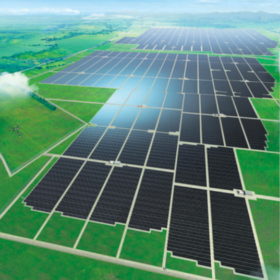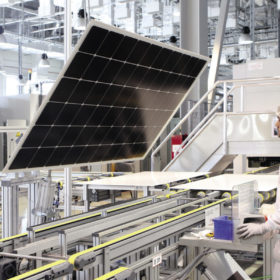Solar irrigation product converts sunlight directly into motion
The invention converts energy produced by PV cells directly into mechanical motion without batteries or power electronics. Its developers claim the solar motor can drive irrigation water pumps and ventilation turbines for more than 20 years without maintenance.
Hydrogen-powered bicycles offer new electromobility concept
With the 200 hydrogen bikes offered to journalists and world leaders at the G7 summit in Biarritz, France proving popular, manufacturer Pragma Industries has received an order for 1,000 of them from Chilean president Sebastian Pinera. The company’s founder, Pierre Forté, wants the bike to have a societal impact in developing countries.
Dutch government treats 21 municipalities to smart EV chargers
Vehicle-to-grid functions could soon become increasingly important. While policymakers discuss the necessary regulations in other nations, the Netherlands government is motoring ahead with the technology.
The long read: Production ambitions
While China hosts the lion’s share of production capacity for solar modules, many other parts of the world harbor the ambition to build manufacturing industries of their own. Italy’s Ecoprogetti is building production lines all over the world in 2019, and pv magazine had the chance to catch up with the family-owned company’s CEO Laura Sartore, who sees India and the Middle East as the key markets for the PV production equipment business.
Energy storage installations to grow 122-fold by 2040; India among top 3
The global installed capacity will grow from a modest 9 GW/17 GWh as of 2018 to 1,095 GW/2,850 GWh in the next two decades. Just 10 countries will account for almost 75% of the overall gigawatt market, with China, USA, India and Germany leading the pack.
Global PV market: 114 GW to be installed in 2019, with continued growth onwards
According to the latest market forecast published by Wood Mackenzie, it seems that global PV installation figures will rise to 125 GW per year from 2020. Continued global capacity expansion will come in through a growing gigawatts-club.
“Let’s compete on quality and innovation”: Vikram Solar CFO
With India losing major solar markets to stiffer competition from cheaper products, it’s high time to change the game by playing on quality and innovation—according to Vikram Solar Chief Financial Officer Rajendra Kumar Parakh, who spoke to pv magazine on the challenge of shrinking markets before Indian solar manufacturers.
Policy can spell success or failure for EVs in Europe
Since 2017, several European governments have announced bans on sales of conventional gasoline and diesel vehicles. Countries like France and the United Kingdom have set bans to come into force by 2040, while Norway has set a more ambitious goal of 2025. Raquel Soat, Research Analyst at Navigant, looks at how policy might affect European electric vehicle markets over the coming years.
Battery maker CATL ramps up investment in German gigafab to €1.8 billion
Previously, a mere €240 million (Rs1,870 crore) was set to flow into the giga-factory. The corporation’s management reasoned new demand for its battery cells made more investment necessary.
The long read: The glue that binds HJT
The push towards higher-efficiency technologies drives innovation right across the supply chain. Long proven in the electronics industry, an electrically conductive adhesive (ECA) is now being deployed in heterojunction production, facilitated by new equipment.














